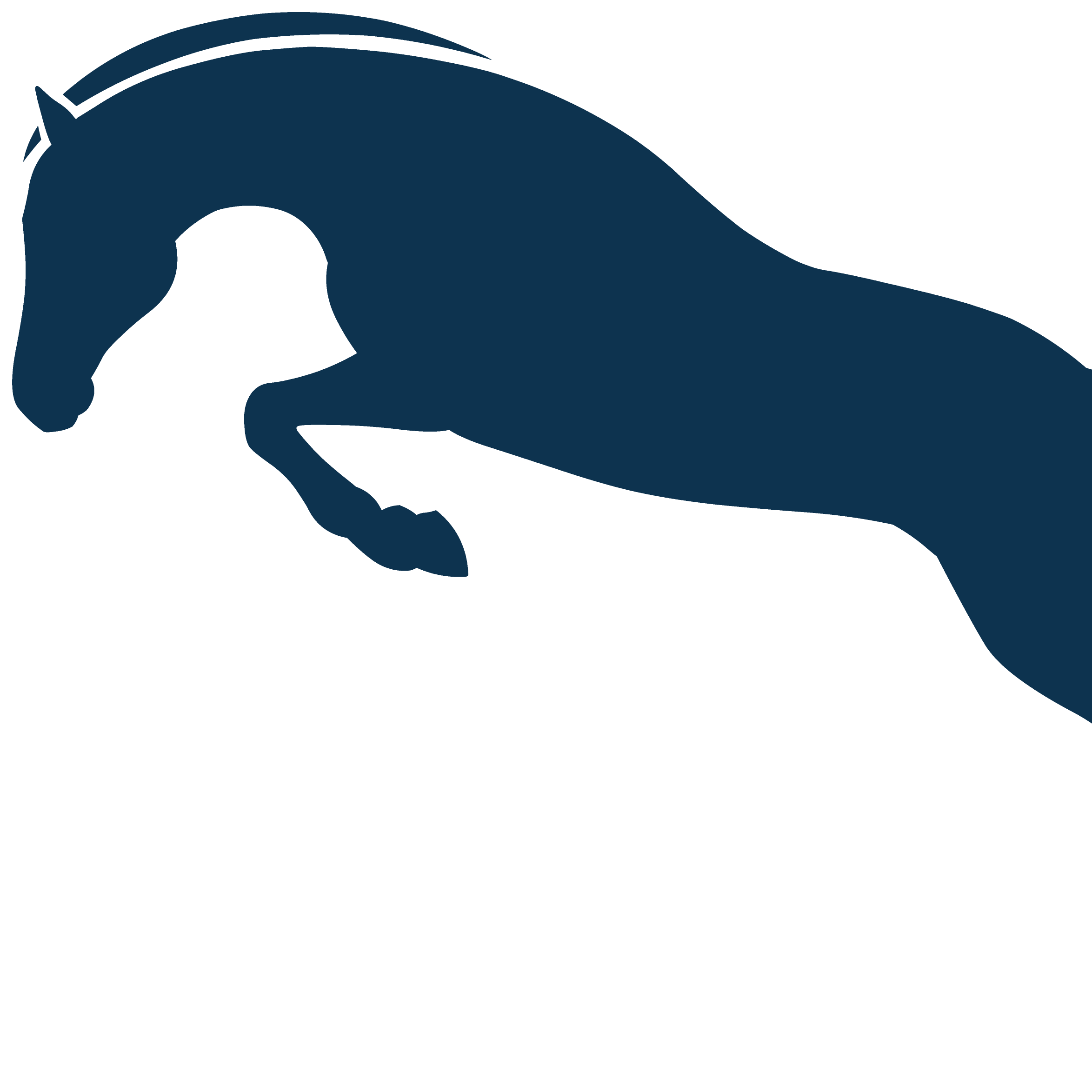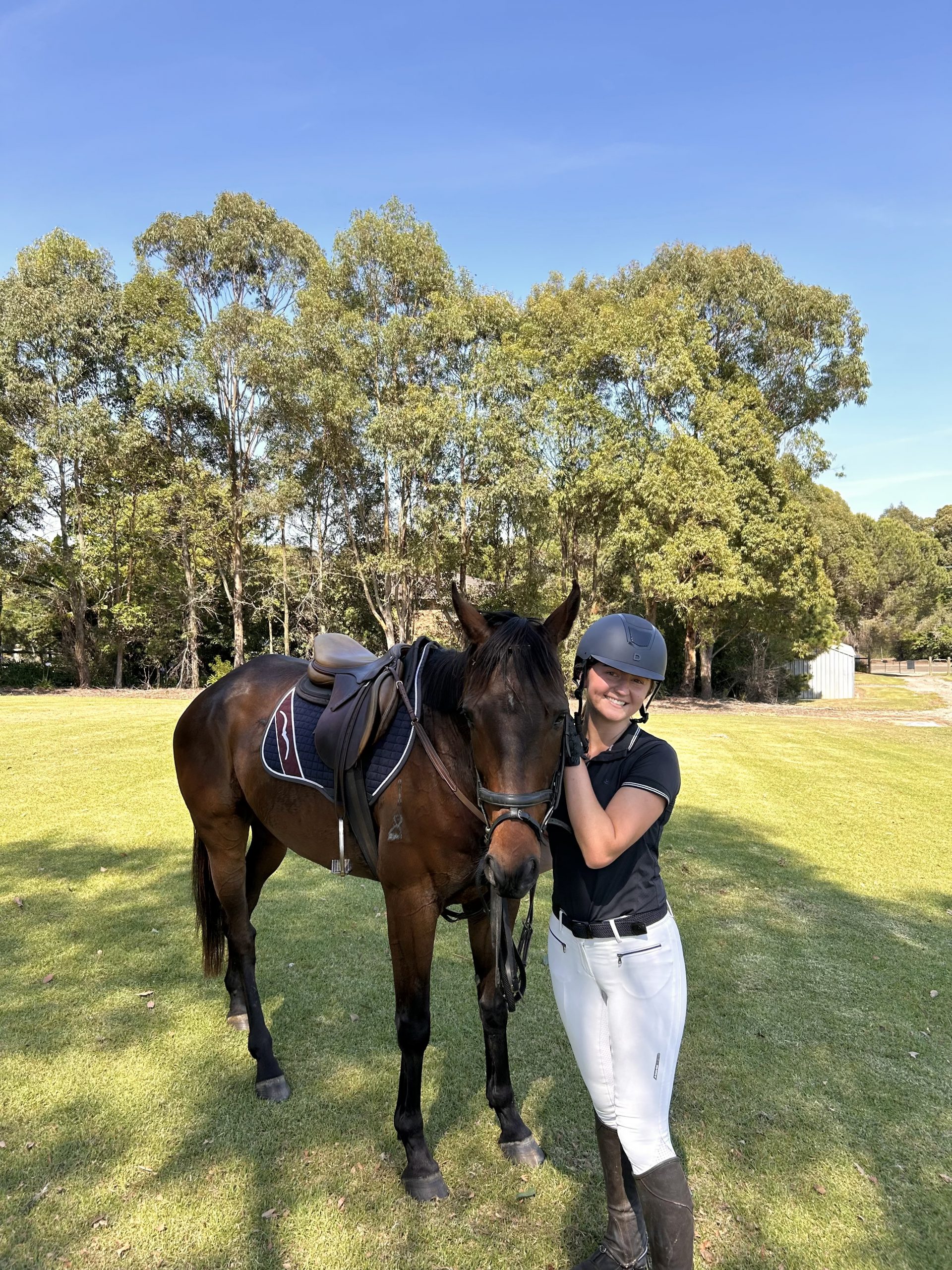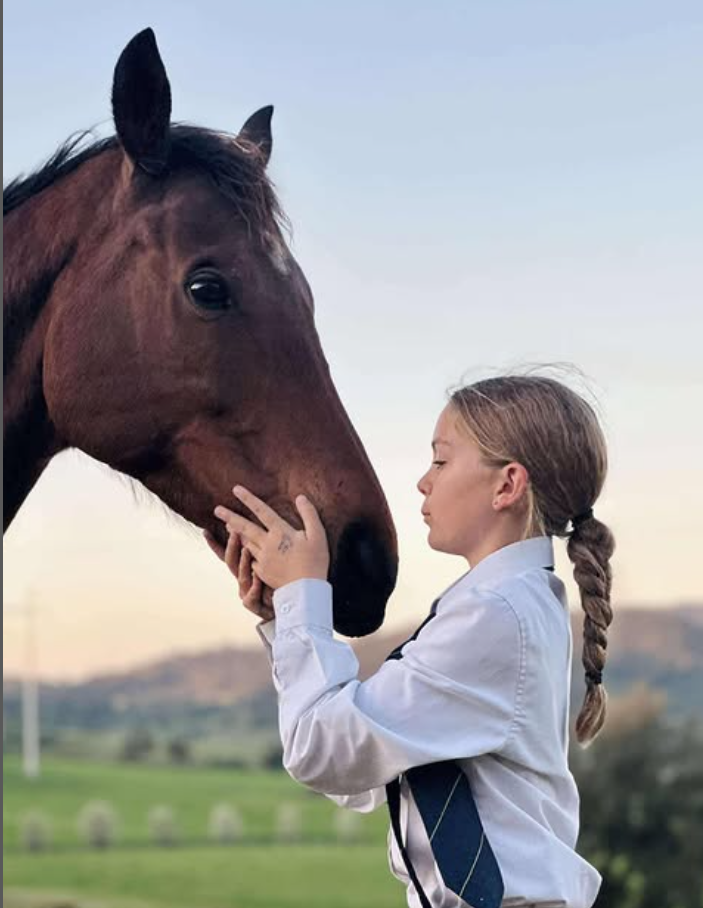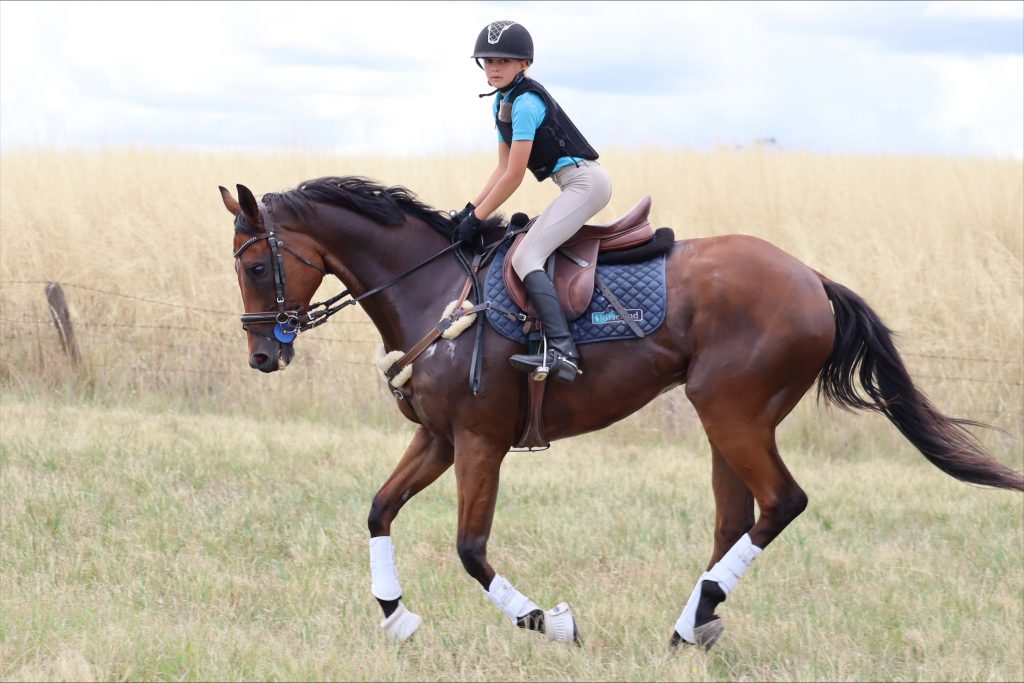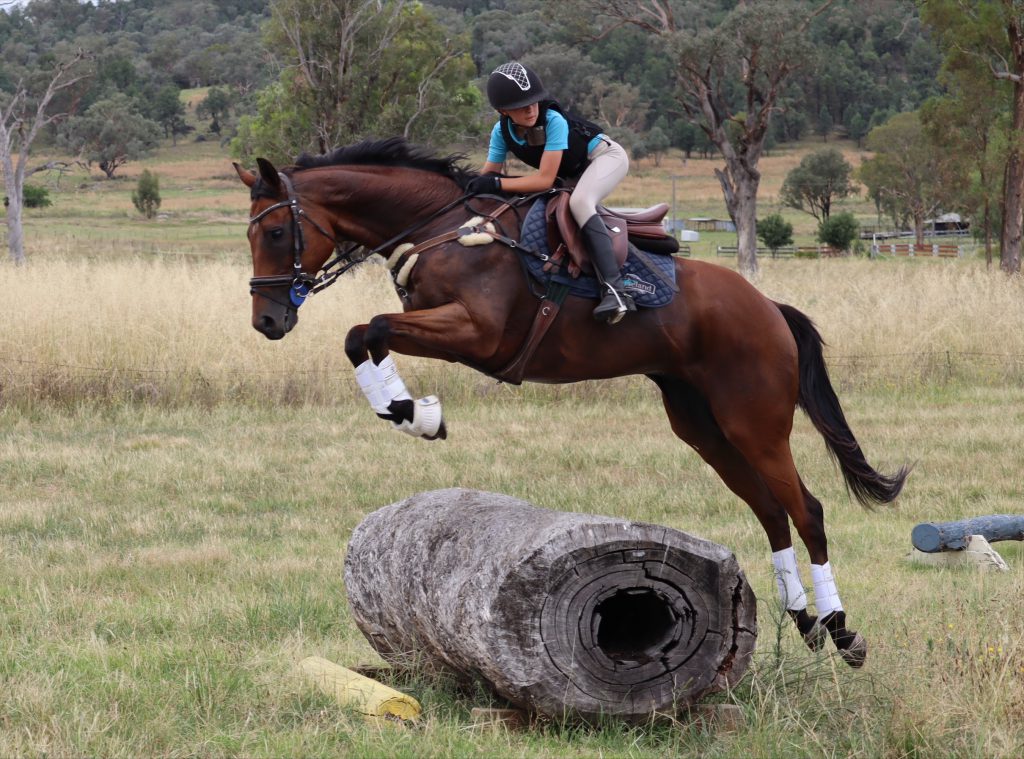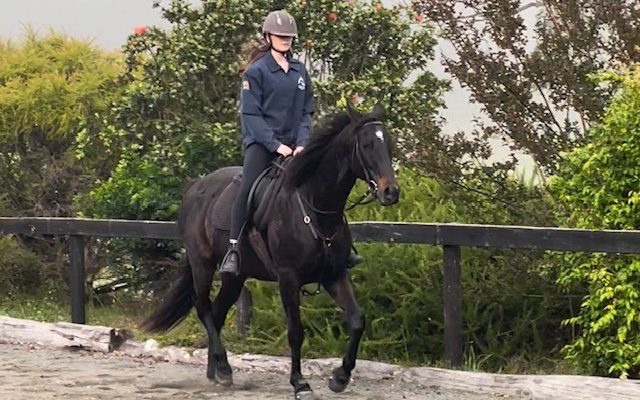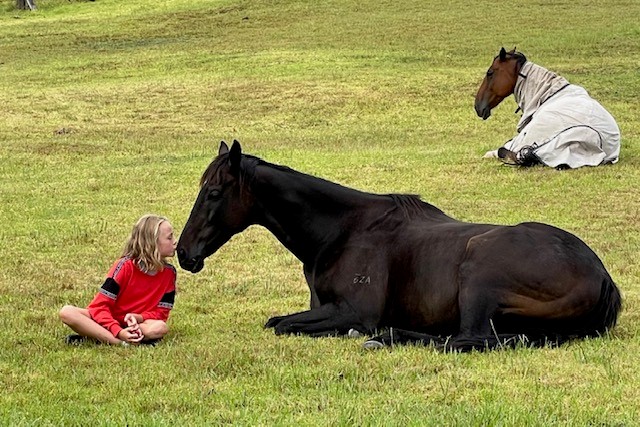Not every Thoroughbred finds their calling on the track. For horses like Port George, he found his calling in the arena. Following his retirement from racing and with some nurturing and retraining at Team Thoroughbred NSW, “dear little Port George”, as previous owner Robyn Knight referred to him, proved that life after racing can be just as fulfilling.
When Port George first arrived at Robert Knight’s training stables, his partner Robyn identified quickly that he had a relatively unique personality that required a lot of extra attention.
Although there were some initial challenges, Robert and Robyn persevered for more than six months into his training when Port George was “going beautifully” and was ready for a race. However, after six race starts and being five years young Robyn decided it was time to retire Port George and focus on his retraining.
Despite struggling on the track, Port George showed promise in the arena.
“He is a beautiful horse, nature wise. Could do anything with him on the ground,” Robyn said.
“A sweetheart like you wouldn’t believe but just didn’t cope with a saddle on his back and a racetrack”
Despite trying her best, Robyn knew Port George needed specialised retraining. That’s when she decided to reach out to Team Thoroughbred NSW.
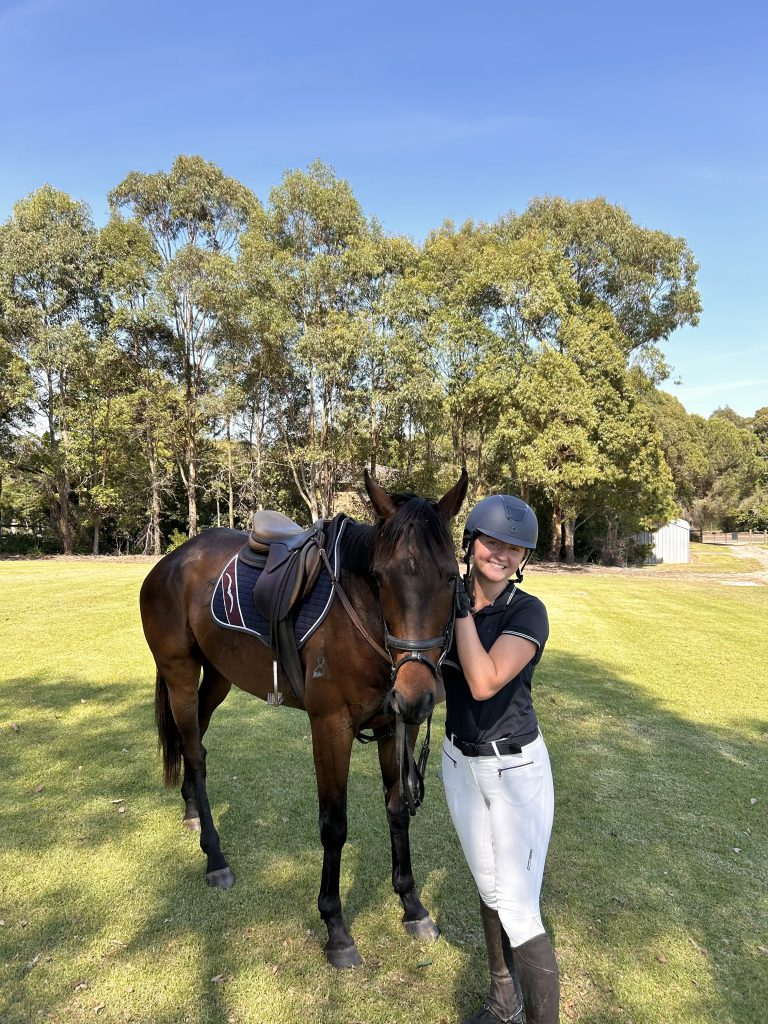
“When I found out that he had been approved to the Team Thoroughbred Welfare Program at St Heliers, I was just delighted,” Robyn said.
“He wouldn’t have had a hope without Team Thoroughbred because I don’t have the necessary time or the staff.
“To retrain these horses, it’s just so valuable. It’s industry money really well spent.”
When Robyn learnt that Port George had progressed through the retraining program with Team Thoroughbred and had been rehomed to his new home after racing, she was overcome with emotion.
“I cried. I’m just so thrilled to hear that he’s got a home and he’s doing so well,” she said.
“That’s just magic. Absolutely magic.”
After some time with Team Thoroughbred Retrainer, Port George was ready for his next chapter.
Port George met his new owner Faith, a young rider searching for her first off-the-track thoroughbred, at Belltrees Farm.
After just one ride, Faith knew Port George was the one.
“He was just so quiet and seemed really relaxed even though it was my first ride on him,” she said.
“I knew that he’d be a good option for me as I’m quite used to Thoroughbreds that are similar to him.”
Since arriving at his new home, Port George has quickly become a beloved member of Faith’s stable.
“He’s really settled in quite easily,” Faith said.
“We have quite a handful of horses but he’s very sociable and well liked by the others in the paddock.”
With the assistance of Team Thoroughbred, Faith was able to find her perfect Thoroughbred companion.
“The program made it easier for a newcomer owning an ex-racehorse a lot easier,” she said.
“All the hard work Team Thoroughbred puts into the horses to make them suitable for rehoming really pays off.”
“It’s a great stepping stone for someone like me wanting to give it a go.”
With plans to compete in dressage and eventually try jumping, Faith and Port George’s journey is just beginning.
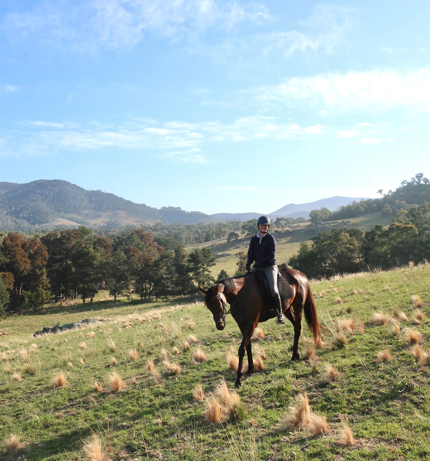
“I guess we’re always trying to experience new things and to see what areas he needs to improve,” Faith said.
“Hopefully by the end of the year we’ll be jumping.”
From a timid racehorse to a confident partner in his new home, Port George has certainly come a long way.
Team Thoroughbred NSW is Racing NSW’s direct retraining and rehoming program for retired NSW thoroughbred racehorses. This program operates out of multiple properties across the State acquired by Racing NSW for the purpose of equine welfare. These Thoroughbred retraining facilities ensure that industry participants have an avenue to rehome their horses if their rehoming efforts have not been successful when they decide to retire their horses or not commence racing them.
